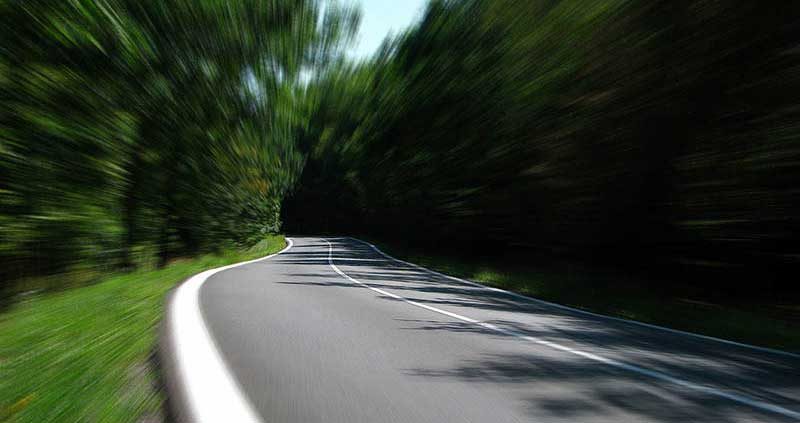7 Ways To Boost WordPress Page Speed & Reduce Load Time
Did you know that Google gives preferential treatment to websites that load faster in their search rankings AND their Adwords rankings?
Yes, that’s right. If your website loads faster, you could rank higher in Google organic search results and you could see a lower cost-per-click in Google Adwords. And you’ll also see lower bounce rates, more customer engagement and a higher conversion rate.
How do you make your WordPress site faster? How do you reduce your page load time?
Here are seven things you can do to improve your website’s page speed:
1. Use A Host Known For Speed
First, the basics. If your website is hosted with a provider that doesn’t prioritize speed or runs on outdated technology, how can you possibly expect blazing fast speeds?
While speed is important, it’s not everything. You also need your hosting provider to be secure, have good uptime, and of course be competitively priced.
Since there are so many options to choose from, we’ve done all the research necessary and put together two lists of the best hosting providers depending on your needs:
The best shared hosting providers for WordPress sites on a budget.
The best managed VPS WordPress hosting providers for large or fast-growing websites.
2. Use A Lightweight Theme
After choosing the right hosting provider, the next thing you need to do is make sure you’re using a fast, lightweight WordPress theme. Page speed is related to how well a theme is written. If a theme is not written with speed in mind, then no amount of tweaks will help.
By using a lightweight WordPress theme that loads fast out of the box, you’re starting from a great position. This gives you the opportunity to really get the most out of the rest of these page speed tweaks we discuss.
Test a theme’s speed by running its demo through Google Page Speed Insights and Pingdom.
Again, choosing a theme can be very time-consuming since there are so many options. And like choosing a host, speed is not the only thing to consider– you want to consider design and functionality as well.
We’ve already done the work for you here too. Here are some lists we’ve build for the best free & paid WordPress themes based on speed, functionality and design:
Free WordPress Themes We Recommend
Free One-Page WordPress Themes
Free Magazine & Blog WordPress Themes
Free Woocommerce Themes
Premium WordPress Themes We Recommend
Premium One-Page WordPress Themes
Premium Magazine & Blog WordPress Themes
Premium Woocommerce Themes
3. Install EWWW Image Optimizer
Ok, now that the basics are covered, we can get into the true page speed tweaks. One of the largest items for a website will be it’s images, so optimizing those images will yield big results.
There are two ways you need to tweak your images– making sure that they are the right size, and using an image optimizer like EWWW Image Optimizer to optimize the images themselves.
Make sure your images are uploaded at the right size helps load your pages much faster. There’s no sense uploading a 1.3MB image that’s 5,000 pixels wide only to resize that image to be 800 pixels wide. If that same image was uploaded as 800 pixels wide, it would maybe be 150kB and you’d save your viewers 90% in bandwidth usage. Plus you wouldn’t force the browser to resize the image, which also takes time.
Once you’re using the right image size, run lossless optimization on it. This reduces image file size even more without compromising quality. EWWW Image Optimizer is the best WordPress plugin to accomplish this.
4. Install W3 Total Cache
Any plan to boost your page speed and load time would be incomplete without talking about a caching and overall performance optimization plugin. The main two choices are W3 Total Cache and WP Super Cache. We prefer W3 Total Cache, but it’s all personal preference.
The one benefit of W3 Total Cache is that it seamlessly integrates with MaxCDN, which we will discuss in step 7.
5. Install WP Performance Booster
When it comes to purely boosting your Google Page Speed score, we haven’t come across any plugin that improves it as much as WP Performance Score Booster. We’re not sure what exactly makes this particular plugin special, but it works, and that’s what matters.
We do suggest using this in conjunction with all other plugins we’ve mentioned here, but it’s always a good idea to be careful when using redundant plugins. In certain circumstances, this could cause errors here and there, so if you see anything funky happening with your website, try disabling this plugin and see if the problem is fixed.
6. Install WP Sweep
WordPress can become very clunky and bloated overtime with files that are no longer necessary. By eliminating these files, your server can deliver the necessary files faster.
WP Sweep was developed by a very experienced, respected WordPress plugin developer by the name of Lester Chan. While there are a number of plugins that accomplish this functionality, WP Sweep is the most trusted option.
7. Use a CDN Like MaxCDN, Amazon Cloudfront or Fastly
A Content Delivery Network, or CDN, is a network of servers scattered all over the globe that stores your static web files and delivers those files to your web visitors based on where they’re located geographically. By using a CDN, you essentially reduce the distance between your web visitors and your servers, allowing files to be delivered faster.
The three main CDNs are MaxCDN, Amazon Cloudfront and Fastly.
MaxCDN is the lowest-cost option, and it integrated well with W3 Total Cache.
Amazon Cloudfront integrates well with websites also hosted by Amazon through AWS.
Fastly is a premium CDN that’s trusted by some of the most trafficked websites.
Conclusion
There you have it! Seven surefire ways to boost your page speed and decrease your page load time. Did we miss any suggestions or tools? Let us know in the comments below!



